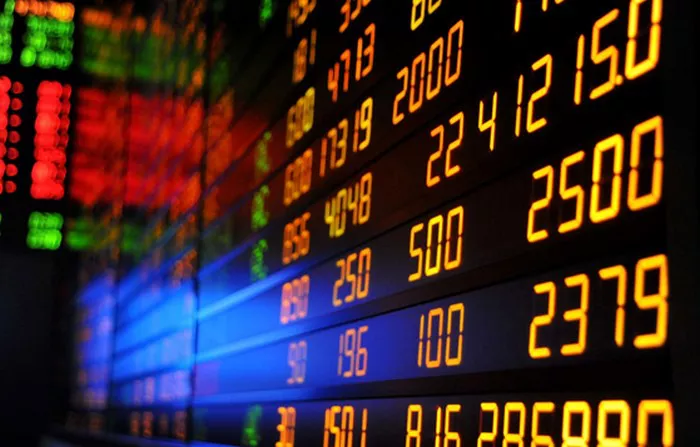Futures contracts are essential financial instruments that play a pivotal role in the global financial markets. They allow market participants to hedge risk, speculate on price movements, and engage in price discovery.
Defining Futures Contracts
A futures contract is a standardized financial agreement between two parties to buy or sell a specified quantity of an underlying asset at a predetermined price on a future date. These contracts are traded on organized futures exchanges, providing a transparent and regulated marketplace for participants. While futures contracts can cover a wide range of assets, including commodities, financial instruments, and even cryptocurrencies, let’s explore a common example using a commodity futures contract.
Example: Corn Futures Contract
Imagine a scenario where you are a farmer in the American Midwest, and you grow corn. Your corn harvest will be ready in three months, but you are concerned about the price of corn falling by the time you are ready to sell it. To protect yourself against the risk of declining corn prices, you decide to enter into a corn futures contract.
Parties Involved
In this futures contract example, there are two primary parties:
You, the Farmer (Seller): You are the producer of the underlying asset, which is corn in this case. You want to secure a favorable price for your corn when it’s ready for sale.
Speculator or Hedger (Buyer): The other party could be a speculator or a hedger, such as a grain trader or a food processing company. They may be interested in buying corn futures to either speculate on price movements or hedge their risk of needing corn in the future.
Contract Specifications
Every futures contract has specific terms and conditions that must be met. In the case of the corn futures contract, the following specifications are relevant:
Underlying Asset: Corn (specified quantity, e.g., 5,000 bushels).
Contract Size: Each corn futures contract represents a standardized quantity of corn, typically 5,000 bushels.
Delivery Month: Futures contracts have specific delivery months. For this example, let’s assume the delivery month is December.
Futures Price: The agreed-upon price at which the corn will be bought or sold in the future. In this case, let’s say the futures price is $5.00 per bushel.
Expiration Date: The last trading day when the contract can be settled or offset. In this example, the expiration date is the last trading day in December.
Entering the Futures Contract
As a farmer, you want to lock in a favorable price for your corn, so you decide to sell corn futures contracts. You enter into a short (sell) position, agreeing to deliver 5,000 bushels of corn in December at the futures price of $5.00 per bushel.
On the other side, the buyer of the contract, whether a speculator or hedger, enters into a long (buy) position. They believe that the price of corn will rise or want to hedge against a potential price increase in the future.
Price Movements
Between the time you enter the futures contract and the contract’s expiration in December, the price of corn may fluctuate in response to various factors such as weather conditions, supply and demand dynamics, geopolitical events, and economic data releases. These price movements can work in your favor or against it, depending on your initial position.
Settlement Options
As the expiration date approaches, there are a few possible scenarios:
Physical Delivery: If you hold the short (sell) position, you will need to deliver 5,000 bushels of corn to the buyer at the agreed-upon price of $5.00 per bushel. If you are the buyer, you will receive the physical delivery of corn.
Cash Settlement: In many futures contracts, particularly those involving financial instruments or where physical delivery is not practical, cash settlement is the norm. Instead of delivering or receiving the physical asset, the contract is settled in cash based on the difference between the futures price and the market price at the time of expiration. In this case, if you are the seller, you would pay the buyer the difference between $5.00 and the market price if it’s lower. If you are the buyer, you would receive the payment if the market price is below $5.00.
Offsetting Positions: Before the expiration date, you can choose to offset your position by taking an opposite position in the same contract. For example, if you are the seller, you can buy back the same number of contracts you initially sold. This offsets your position and eliminates your obligation to deliver corn.
Risk Management and Speculation
This example illustrates the dual role of futures contracts in risk management and speculation. As a farmer, you used the contract to hedge against the risk of falling corn prices. On the other side, the buyer of the contract may be speculating on price movements in the hope of profiting from future price increases.
Conclusion
Futures contracts provide a structured and regulated framework for market participants to manage risk, speculate on price movements, and facilitate price discovery. The example of a corn futures contract demonstrates how these contracts work, their essential components, and their real-world applications. While the example focused on agricultural commodities, futures contracts are used across a broad spectrum of asset classes, making them a vital tool in modern finance. Understanding futures contracts is crucial for anyone involved in trading, investing, or risk management in the global financial markets.


